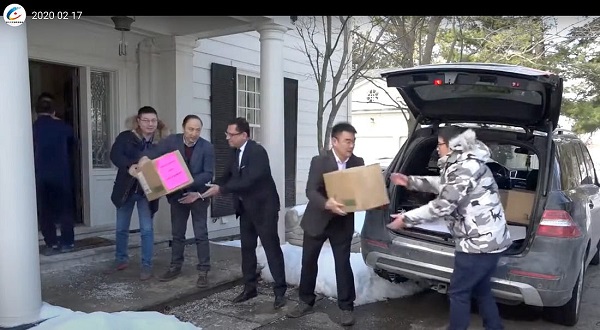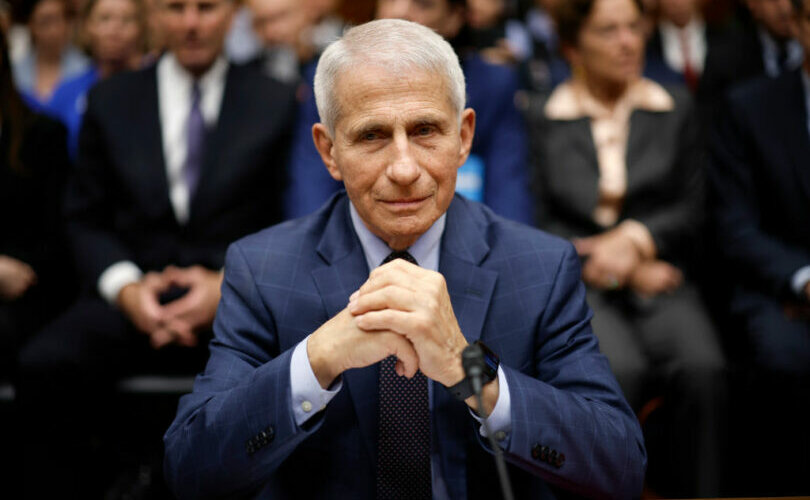Alberta
COVID-19 Friday update, 4 new deaths, 58 new case, outdoor gatherings upped to 50 people, Dr. Hinshaw cutbacks & more

In the government’s COVID-19 Friday May 15th update, chief medical officer of health for Alberta Dr. Deena Hinshaw reported four more deaths, 58 new case, changes to the outdoor gathering rules now up to 50 people and she plans to cutback her attendance at the daily reports, among other information.
There have been four new deaths and 58 new case since Thursday’s report. Alberta has now had a total of 125 deaths and 6,515 confirmed cases of the coronavirus since the pandemic began here in early March. The four latest victims were residents of continuing care facilities in the Calgary Zone. There are currently 1,073 active cases across the province, 62 of them in hospital, and nine of those in intensive care units.
Dr. Hinshaw had a message for Albertans as they head into a long weekend, “Even while we begin to enter Stage 1 of our relaunch, let us remember this virus still poses a risk, particularly to the elderly and people with chronic medical conditions,” Adding, “We need to remember that no Albertan is expendable.”
“The better that we can collectively hold our infection rate stable and low as we move into this Stage 1, the quicker we can move into Stage 2,” Dr. Deena Hinshaw

The Canadian Forces Snowbirds over City of Edmonton as part of cross country tour to thank essential workers, Hugo Sanchez Photography
Updated guidelines for outdoor gatherings to 50 people
“As we start to ease certain restrictions, it is increasingly important that we all continue to take proper precautions to prevent the spread of COVID-19.” Hinshaw said As the weather continues to warm up and just in time for the long weekend, the limit for outdoor gatherings has increased from 15 to 50 effective Friday May 15.
- Albertans are still asked to keep a two-metre distance from others and practising proper hygiene.
- If you’re holding a gathering in your backyard, you’re encouraged to sanitize doorknobs and washrooms if guests are going inside and have hand sanitizer available. Indoor gatherings are still limited to a maximum of 15 people or fewer.
- Physical distance of two metres must remain between people from different households, and attendees must follow proper hygiene practices.
- Attendees should not share food or drinks.
- Indoor gatherings are still limited to fewer than 15 people, except when otherwise identified in public health orders such as workplaces, places of worship, and in restaurants.
- Download the ABTraceTogether app and turning it on when leaving home.
Staying safe over the long weekend
Provincial parks are open, but some facilities remain closed, campfires are not permitted, and camping does not open until June 1.
Albertans should follow public health guidelines and take extra steps to keep members of their household safe when heading to provincial parks, cottages, and onto public land this weekend.
This includes:
- Respecting the health and safety of small communities along the way by planning their trip without stops for gas or food, where possible. Continuing to practise physical distancing and proper handwashing.
- Respecting municipal restrictions for playgrounds. If playgrounds can be accessed, encourage children to play with children in the same household or their cohort family, sanitize hands before or after playing on a play structure, and remember to wash everyone’s hands thoroughly as soon as possible.
- Download the ABTraceTogether app and turning it on when leaving home.

Alberta’s chief medical officer of health Dr. Deena Hinshaw provided update on Friday, May 15th. (Chris Schwarz/Government of Alberta)
Dr. Hinshaw to reduce her attendance at media updates
In a surprise announcement, the stoic, confident, strong face and voice Albertans have grown accustomed at the daily Covid-19 update, Dr. Hinshaw announced she is cutting back her attendance after this long weekend.
Explaining, “The pandemic is far from over,” Hinshaw said. “However, in consideration of the reduced number of cases overall and the fact that we have begun to resume operations under Stage 1 of Alberta’s relaunch strategy, I made the recommendation to scale down the frequency of my availabilities.”
“I know many have become accustomed to these daily updates. I ensure you I remain committed to transparency and while the number of availabilities may decrease, I will continue to provide the information you rely on.” She said
Hinshaw new schedule for attending news conferences will be every other weekday, starting Tuesday, but of course would revert back if Covid-19 numbers or policies changed significantly. Updates on numbers will be provided daily in online reports throughout the long weekend.
Coviod-19 by the numbers. Alberta cases as of Friday:
- 58 new cases reported, bringing the number of total active cases to 1,073.
- There are 103 active cases and 576 recovered cases at continuing care facilities; 91 residents at these facilities have died.
- The total deaths are 125. With 89 in the Calgary zone, 15 in the North zone, 12 in the Edmonton zone, eight in the South zone and one in the Central zone.
- Calgary zone: 870 active, 3,505
- South zone: 106 active, 1,069
- Edmonton zone: 61 active, 444 recovered.
- North zone: 18 active, 195
- Central zone: 13 active, 85 recovered.
- Five active cases and 19 recovered cases in zones yet to be confirmed
- There have been 189,225 people tested for COVID-19, with a total of 204,723 tests performed by the lab. In the last 24 hours, 4,505 tests have been completed.

Interactive aggregate data on COVID-19 cases in Alberta
https://www.alberta.ca/stats/covid-19-alberta-statistics.htm
Daily updates from Alberta Government https://www.alberta.ca/news.aspx
Alberta Connects hours of operation
- The Alberta Connects Contact Centre (310-4455) has resumed normal operating hours and is available to Albertans Monday to Friday, from 8:15 a.m. to 4:30 p.m. The centre will not be operating over the long weekend. Service will resume on May 19.
Stage one of relaunch has begun
- Stage one of Alberta’s relaunch strategy puts safety first as restrictions are gradually lifted and Albertans begin to get back to work. Calgary and Brooks will see a more gradual reopening, taking into account higher case numbers in these two cities, to balance public safety with the need to get businesses open and services restored for Albertans.

Businesses and locations that are reopening can access a template on at BizConnect
Supporting Alberta businesses through relaunch
- The Alberta Biz Connect web page provides business owners with information on health and safety guidelines for general workplaces and sector-specific guidelines for those able to open in stage one of relaunch to ensure businesses can reopen safely during the COVID-19 pandemic.
- Businesses and locations that are reopening can access a template on at BizConnect to publicly post how employees and patrons are protected from the spread of infection. The timeline to complete this template has been extended from seven to 14 days.
- This template is voluntary for locations that have remained open.
- Alberta Transportation is developing a plan to safely resume all road tests while preventing the spread of COVID-19.
- As part of the Government of Alberta’s response to the COVID-19 pandemic, a limited number of road tests are available.
- Information on the limited road tests can be found on the COVID-19 Commercial Carrier Information
- The Court of Queen’s Bench will extend its limitation of hearings to emergency and urgent matters only to June 26, and the adjournment of criminal jury trials and jury selections to September 8.
- More information can be found online.
Albertans are encouraged to download and use ABTraceTogether app
- The ABTraceTogether app will enhance current manual contact tracing and capacity, and facilitate early detection to help reduce the spread of the virus and better protect Albertans. It means Albertans will be contacted more quickly if they are at risk.
- Use of the app is voluntary; users must opt in.
- The app does not track the user’s physical location and does not use GPS. Protecting privacy is paramount; all contact data is only on the user’s phone and is deleted after 21 days.
- Secure contact tracing is a cornerstone of Alberta’s Relaunch Strategy. More information on the app, including links to download it, can be found online.
- The app currently has 171,884 registered users.
- Confidential supports are available to help with mental health concerns. The Mental Health Help Line at 1-877-303-2642 and the Addiction Help Line at 1-866-332-2322 are available 24 hours a day, seven days a week. The Canadian Mental Health Association has a variety of resources available at mentalhealthweek.ca
- The Kids Help Phone is available 24-7 and offers professional counselling, information and referrals and volunteer-led, text-based support to young people by texting CONNECT to 686868.
- Online resources provide advice on handling stressful situations and ways to talk with children.

- A 24-hour Family Violence Information Line is available at 310-1818 to get anonymous help in more than 170 languages.
- Alberta’s One Line for Sexual Violence is available at 1-866-403-8000, from 9 a.m. to 9 p.m.
- The requirement for in-person Emergency Protection Order (EPO) applications for those fleeing family violence has been temporarily suspended; provincial courts can now hear applications for EPOs via telecommunication.
- Information sheets and other resources on family violence prevention are available at alberta.ca/COVID19.
- The most important measure Albertans can take to prevent respiratory illnesses, including COVID-19, is to practise good hygiene. This includes cleaning your hands regularly for at least 20 seconds, avoiding touching your face, coughing or sneezing into your elbow or sleeve, and disposing of tissues appropriately.
- Any individual exhibiting symptoms of COVID-19, including cough, fever, runny nose, sore throat or shortness of breath, is eligible for testing. People can access testing by completing the COVID-19 self-assessment online. A separate self-assessment tool is available for health-care and shelter workers, enforcement and first responders. After completing the form, there is no need to call 811.
- Albertans are asked to share acts of kindness they have experienced in their community during this difficult time by using the hashtag #AlbertaCares.
Alberta
Made in Alberta! Province makes it easier to support local products with Buy Local program

Show your Alberta side. Buy Local. |
When the going gets tough, Albertans stick together. That’s why Alberta’s government is launching a new campaign to benefit hard-working Albertans.
Global uncertainty is threatening the livelihoods of hard-working Alberta farmers, ranchers, processors and their families. The ‘Buy Local’ campaign, recently launched by Alberta’s government, encourages consumers to eat, drink and buy local to show our unified support for the province’s agriculture and food industry.
The government’s ‘Buy Local’ campaign encourages consumers to buy products from Alberta’s hard-working farmers, ranchers and food processors that produce safe, nutritious food for Albertans, Canadians and the world.
“It’s time to let these hard-working Albertans know we have their back. Now, more than ever, we need to shop local and buy made-in-Alberta products. The next time you are grocery shopping or go out for dinner or a drink with your friends or family, support local to demonstrate your Alberta pride. We are pleased tariffs don’t impact the ag industry right now and will keep advocating for our ag industry.”
Alberta’s government supports consumer choice. We are providing tools to help folks easily identify Alberta- and Canadian-made foods and products. Choosing local products keeps Albertans’ hard-earned dollars in our province. Whether it is farm-fresh vegetables, potatoes, honey, craft beer, frozen food or our world-renowned beef, Alberta has an abundance of fresh foods produced right on our doorstep.
Quick facts
- This summer, Albertans can support local at more than 150 farmers’ markets across the province and meet the folks who make, bake and grow our food.
- In March 2023, the Alberta government launched the ‘Made in Alberta’ voluntary food and beverage labelling program to support local agriculture and food sectors.
- Through direct connections with processors, the program has created the momentum to continue expanding consumer awareness about the ‘Made in Alberta’ label to help shoppers quickly identify foods and beverages produced in our province.
- Made in Alberta product catalogue website
Related information
Alberta
Province to expand services provided by Alberta Sheriffs: New policing option for municipalities

Expanding municipal police service options |
Proposed amendments would help ensure Alberta’s evolving public safety needs are met while also giving municipalities more options for local policing.
As first announced with the introduction of the Public Safety Statutes Amendment Act, 2024, Alberta’s government is considering creating a new independent agency police service to assume the police-like duties currently performed by Alberta Sheriffs. If passed, Bill 49 would lay additional groundwork for the new police service.
Proposed amendments to the Police Act recognize the unique challenges faced by different communities and seek to empower local governments to adopt strategies that effectively respond to their specific safety concerns, enhancing overall public safety across the province.
If passed, Bill 49 would specify that the new agency would be a Crown corporation with an independent board of directors to oversee its day-to-day operations. The new agency would be operationally independent from the government, consistent with all police services in Alberta. Unlike the Alberta Sheriffs, officers in the new police service would be directly employed by the police service rather than by the government.
“With this bill, we are taking the necessary steps to address the unique public safety concerns in communities across Alberta. As we work towards creating an independent agency police service, we are providing an essential component of Alberta’s police framework for years to come. Our aim is for the new agency is to ensure that Albertans are safe in their communities and receive the best possible service when they need it most.”
Additional amendments would allow municipalities to select the new agency as their local police service once it becomes fully operational and the necessary standards, capacity and frameworks are in place. Alberta’s government is committed to ensuring the new agency works collaboratively with all police services to meet the province’s evolving public safety needs and improve law enforcement response times, particularly in rural communities. While the RCMP would remain the official provincial police service, municipalities would have a new option for their local policing needs.
Once established, the agency would strengthen Alberta’s existing policing model and complement the province’s current police services, which include the RCMP, Indigenous police services and municipal police. It would help fill gaps and ensure law enforcement resources are deployed efficiently across the province.
Related information
-

 2025 Federal Election2 days ago
2025 Federal Election2 days agoPPE Videos, CCP Letters Reveal Pandemic Coordination with Liberal Riding Boss and Former JCCC Leader—While Carney Denies Significant Meeting In Campaign
-

 2025 Federal Election2 days ago
2025 Federal Election2 days agoNo Matter The Winner – My Canada Is Gone
-

 2025 Federal Election1 day ago
2025 Federal Election1 day agoASK YOURSELF! – Can Canada Endure, or Afford the Economic Stagnation of Carney’s Costly Climate Vision?
-

 2025 Federal Election1 day ago
2025 Federal Election1 day agoCSIS Warned Beijing Would Brand Conservatives as Trumpian. Now Carney’s Campaign Is Doing It.
-

 2025 Federal Election1 day ago
2025 Federal Election1 day agoInside Buttongate: How the Liberal Swamp Tried to Smear the Conservative Movement — and Got Exposed
-

 Alberta2 days ago
Alberta2 days agoProvince to expand services provided by Alberta Sheriffs: New policing option for municipalities
-

 Alberta1 day ago
Alberta1 day agoMade in Alberta! Province makes it easier to support local products with Buy Local program
-

 International1 day ago
International1 day agoTulsi Gabbard tells Trump she has ‘evidence’ voting machines are ‘vulnerable to hackers’








